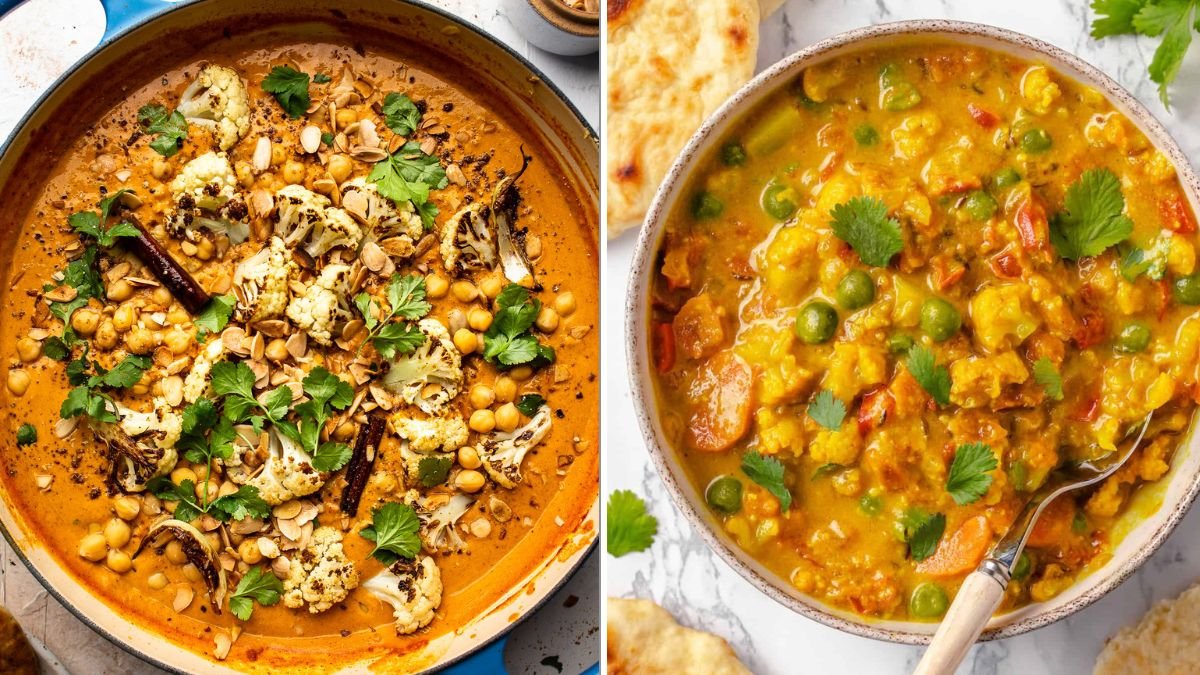Vegetable Korma is one of those comforting Indian dishes that never fails to impress—a medley of colorful vegetables simmered in a rich, fragrant, and mildly spiced sauce. Traditionally, korma recipes use heavy cream or yogurt to achieve that luxurious texture, but what if you could enjoy the same lusciousness without cream?
Yes, it’s entirely possible—and delicious! This recipe will show you exactly how to make Vegetable Korma without cream, using healthier alternatives that retain the same creamy taste and satisfying mouthfeel. Whether you’re vegan, health-conscious, or just out of cream, this 6-step guide will help you create a korma that’s velvety, flavorful, and 100% guilt-free.
Step 1: Gather Your Ingredients
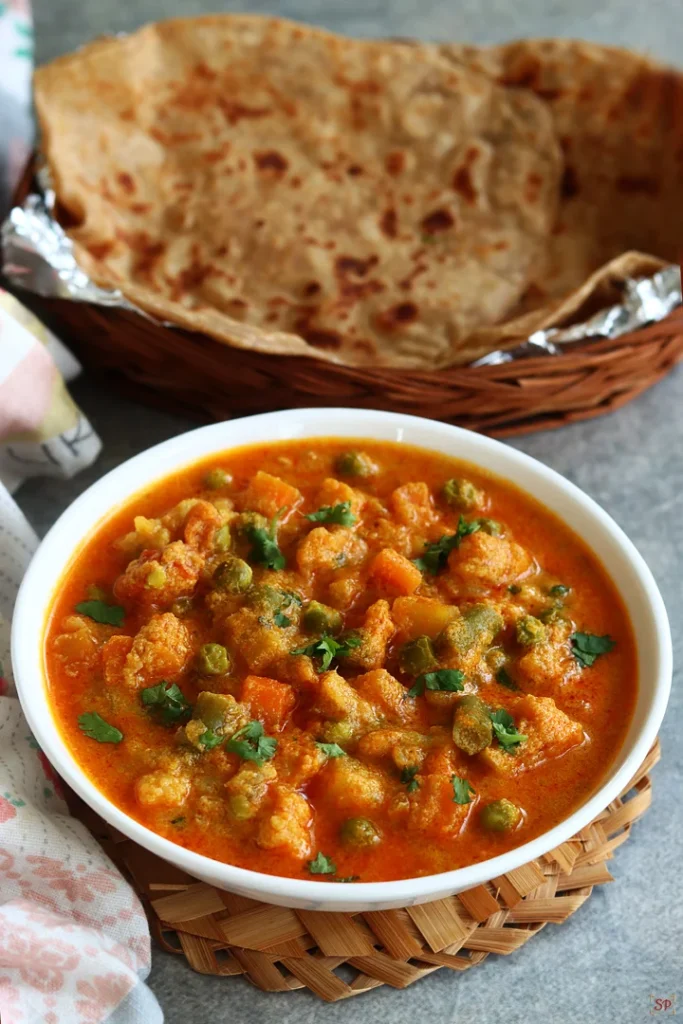
Before you begin, make sure you have everything ready. Korma is all about layers of flavor, and each ingredient contributes to the dish’s rich aroma.
For the vegetables:
- 1 cup cauliflower florets
- ½ cup carrots (diced)
- ½ cup green beans (chopped)
- ½ cup green peas
- ½ cup potatoes (cubed)
- 1 small capsicum (optional, chopped)
For the masala base:
- 2 medium onions (sliced)
- 2 medium tomatoes (chopped)
- 2–3 green chilies (slit)
- 1 tablespoon ginger-garlic paste
- 2 tablespoons oil or ghee
For the “no-cream” richness:
- ¼ cup cashews or almonds (soaked in warm water for 15 minutes)
- 2 tablespoons grated coconut (fresh or desiccated)
- ¼ cup milk or coconut milk (for blending)
For the spices:
- 1 teaspoon cumin seeds
- 2 bay leaves
- 1 cinnamon stick
- 2–3 green cardamoms
- 3–4 cloves
- 1 teaspoon coriander powder
- ½ teaspoon turmeric powder
- 1 teaspoon garam masala
- 1 teaspoon red chili powder (adjust to taste)
- Salt to taste
For garnish:
- Fresh coriander leaves
- A few roasted cashews (optional)
Step 2: Parboil the Vegetables
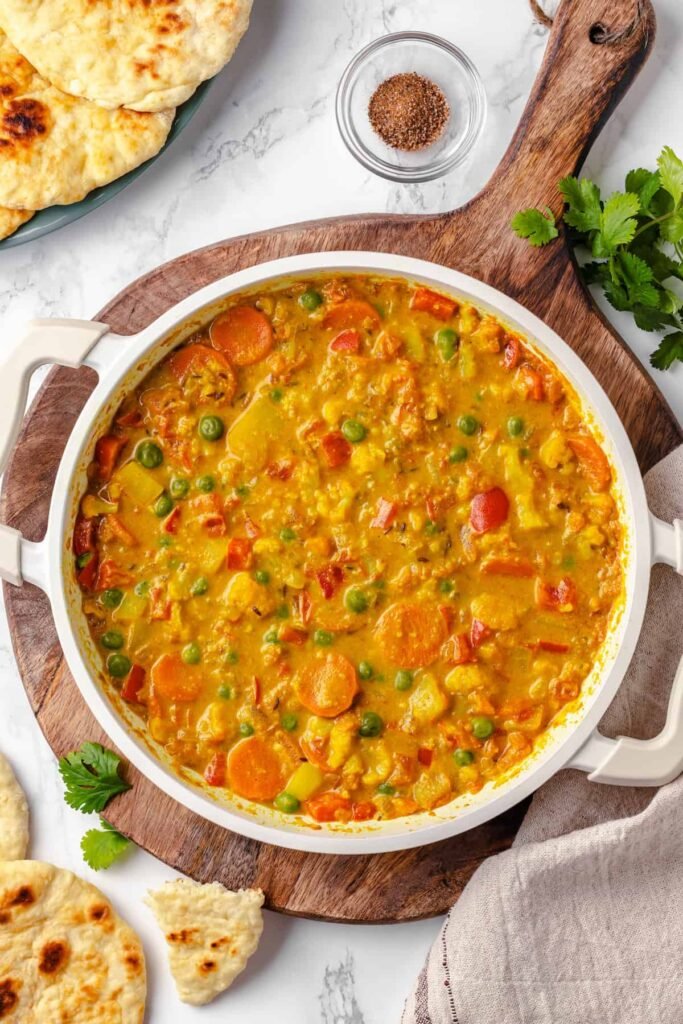
The key to a perfect korma is getting the vegetables tender yet firm—soft enough to soak up the gravy, but not mushy.
- In a pan, boil 2 cups of water with a pinch of salt.
- Add the chopped vegetables (except capsicum) and cook for 3–5 minutes until they’re just tender.
- Drain immediately and set aside.
- If using peas, you can add them at the end of the boiling process since they cook faster.
Pro Tip: Avoid overcooking the vegetables, as they will cook further when added to the gravy. Slight crunchiness gives korma a wonderful texture contrast.
Step 3: Prepare the Cashew-Coconut Paste (The Cream Alternative)
This step replaces the traditional dairy cream with a rich nut-coconut base that gives the same smooth consistency without any heaviness.
- Drain the soaked cashews (or almonds) and add them to a blender.
- Add grated coconut and about ¼ cup of milk or coconut milk.
- Blend into a smooth paste.
- Set aside—this will be added later to thicken the gravy and give it that luxurious creaminess.
Health Note: Cashews and coconut are natural sources of healthy fats and fiber. They provide a silky texture while keeping the dish heart-friendly and vegan-friendly if you use coconut milk.
Step 4: Make the Flavorful Masala Base
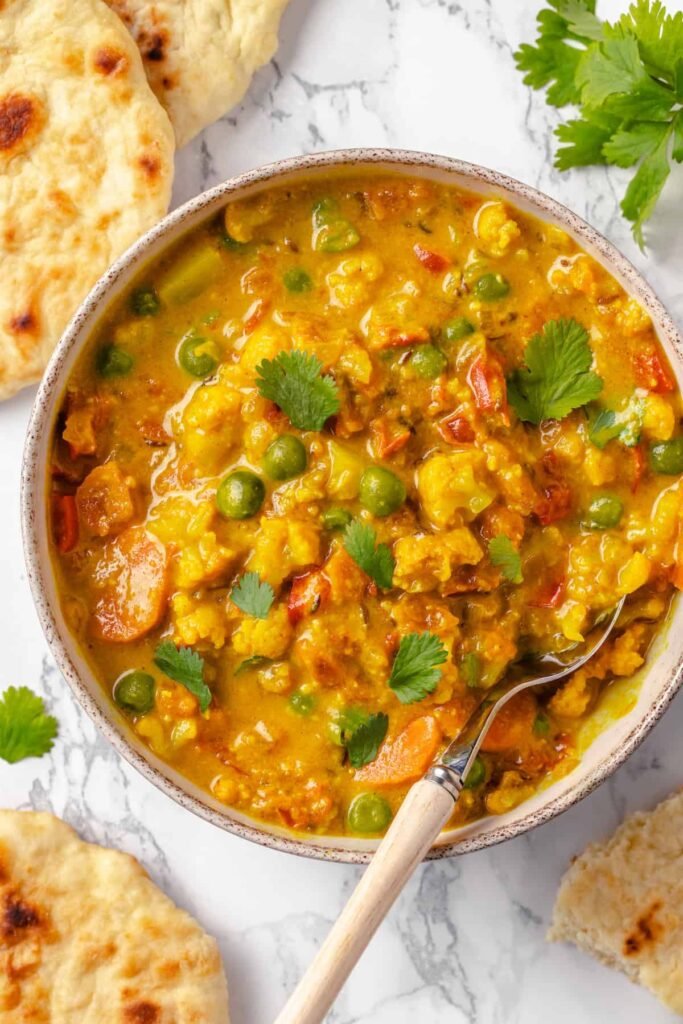
Now comes the part where your kitchen will start smelling divine!
- Heat oil or ghee in a large pan on medium heat.
- Add cumin seeds, bay leaves, cinnamon, cardamom, and cloves. Sauté for 30 seconds until aromatic.
- Add sliced onions and sauté until they turn golden brown. This step is crucial—perfectly browned onions give korma its deep, earthy flavor.
- Add ginger-garlic paste and green chilies. Sauté for another minute until the raw smell disappears.
- Stir in the chopped tomatoes and cook until they soften completely.
- Add turmeric, coriander powder, red chili powder, and a pinch of salt. Mix well and cook until oil separates from the masala.
Once the masala is cooked, let it cool slightly, then blend it into a smooth paste using a little water. This ensures a silky texture for your gravy.
Step 5: Combine Everything to Make the Korma
This is where all the elements—masala, veggies, and nut paste—come together in a harmonious balance.
- In the same pan, heat a little more oil (if needed).
- Pour in the blended onion-tomato masala and cook on low flame for 2–3 minutes.
- Add the cashew-coconut paste and mix well. Stir continuously to prevent sticking.
- Slowly add ¾ to 1 cup of water (depending on your desired consistency) and bring it to a gentle simmer.
- Add the parboiled vegetables and capsicum. Stir well to coat them with the sauce.
- Cover and cook for about 10 minutes on low flame, allowing the vegetables to absorb all the flavors.
Finally, sprinkle garam masala and adjust salt and spice as needed. Simmer for another minute before turning off the heat.
Step 6: Garnish and Serve
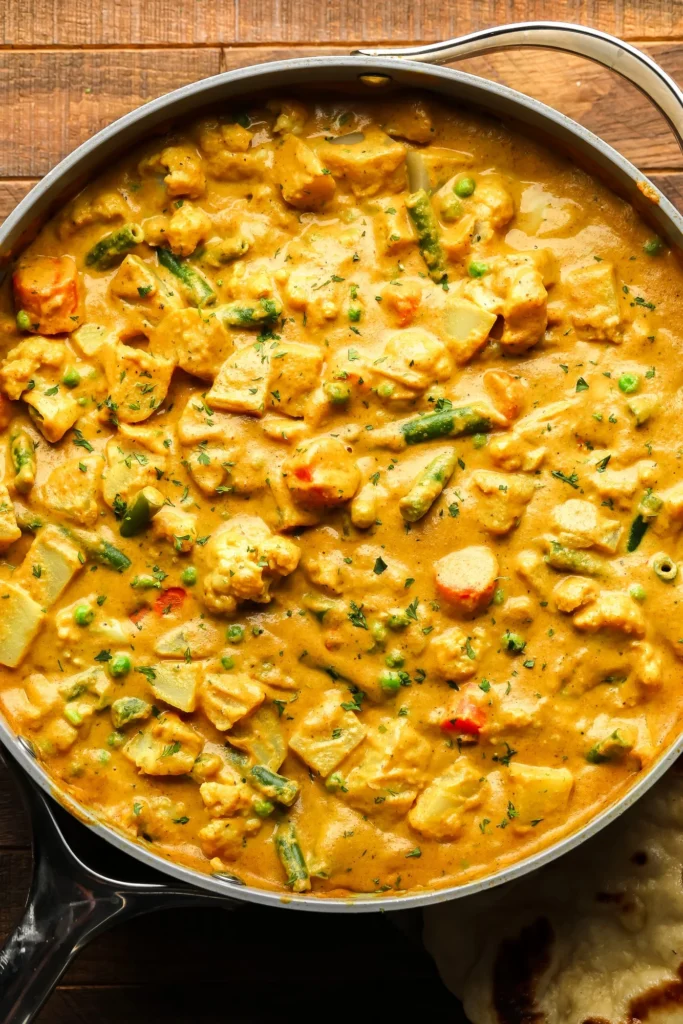
To finish your Vegetable Korma:
- Garnish with chopped fresh coriander leaves.
- Top with roasted cashews for added crunch and richness.
- Optionally, drizzle a teaspoon of coconut milk just before serving for a restaurant-style look.
Your Vegetable Korma without cream is now ready to enjoy—creamy, aromatic, and bursting with flavor!
Serving Suggestions
This versatile dish pairs beautifully with many Indian staples. Here are a few serving ideas:
- With Indian breads: Serve hot with roti, naan, or paratha. The gravy’s richness complements the soft breads perfectly.
- With rice: Pair it with steamed basmati rice, jeera rice, or even coconut rice for a complete meal.
- With dosa or appam: For a South Indian twist, serve your korma with appam or soft dosas.
If you’re preparing a festive spread, pair it with papad, pickle, and a simple cucumber raita for balance.
Pro Tips for Perfect Korma Without Cream
- Choose fresh vegetables: Fresh produce brings out vibrant color and flavor in your curry.
- Don’t skip the nuts: Cashews or almonds are key to achieving creaminess without dairy.
- Balance the spices: Korma should be mildly spiced, not overly hot. Focus on aroma, not heat.
- Control the consistency: Add water gradually. Korma should be thick enough to coat the vegetables but not pasty.
- Add coconut milk last: If using coconut milk, stir it in at the end to prevent curdling.
Why Make Vegetable Korma Without Cream?
Going cream-free doesn’t mean compromising on flavor. Here’s why you’ll love this lighter version:
- Healthier and lighter: Perfect for people looking to reduce dairy or fat intake.
- Vegan-friendly: A fully plant-based recipe without losing the richness.
- Digestive-friendly: Easier on the stomach compared to heavy cream or butter-based gravies.
- Naturally flavorful: The nut and coconut blend enhances taste while maintaining balance.
Plus, this version keeps all the deliciousness of classic korma while being guilt-free enough for everyday meals.
Nutritional Benefits
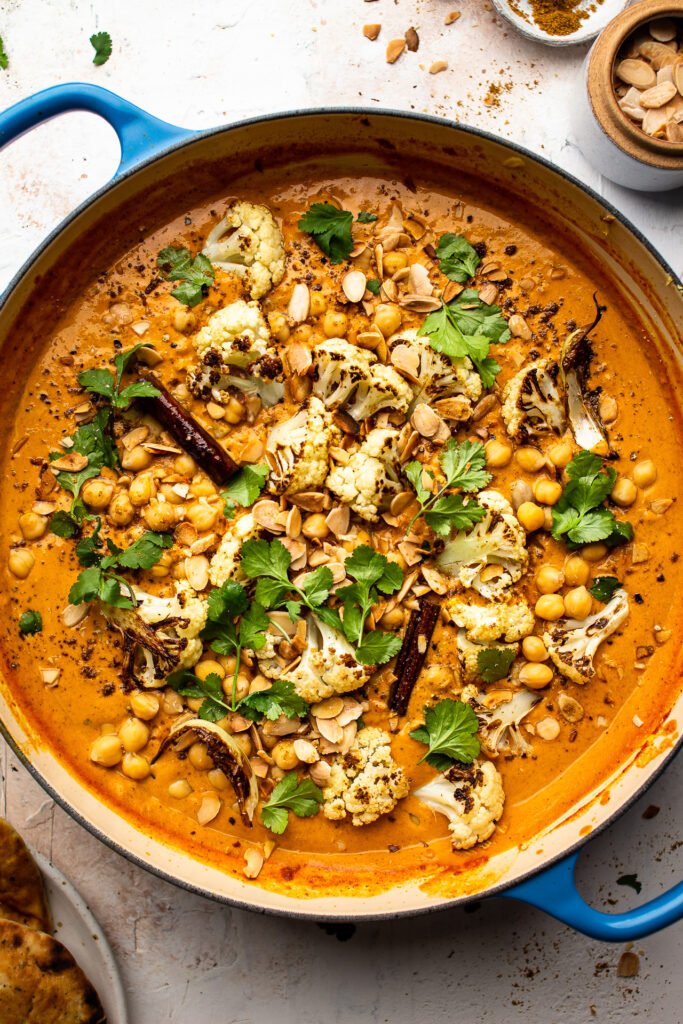
A single serving of this Vegetable Korma (without cream) provides:
- Rich plant protein from peas and beans
- Healthy fats from cashews and coconut
- Vitamins and antioxidants from colorful vegetables
- No added cream or butter—making it low in cholesterol
It’s a wholesome, nutrient-packed dish that doesn’t just taste good—it’s good for you too!
Final Thoughts
Making Vegetable Korma without cream is easier than you might think. By swapping dairy cream for a nut-and-coconut blend, you still get a dish that’s creamy, flavorful, and satisfying—but much lighter and healthier. Each step—from preparing the vegetables to simmering the rich gravy—builds layers of texture and aroma that make every bite irresistible.
So next time you crave something comforting yet wholesome, skip the restaurant takeout and try this 6-step homemade Vegetable Korma. Serve it with warm naan or fluffy rice, and watch it become an instant family favorite!
A simple tweak to a traditional classic—no cream, no compromise—just pure, soulful Indian flavor.
